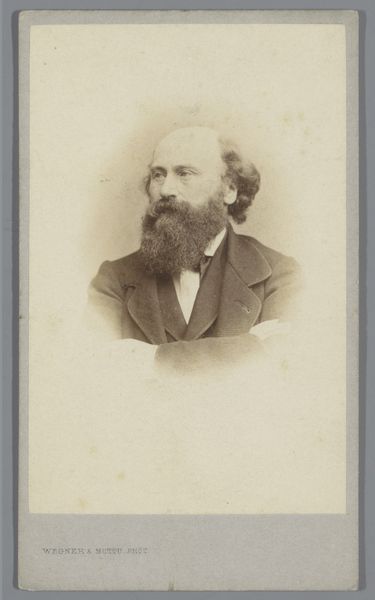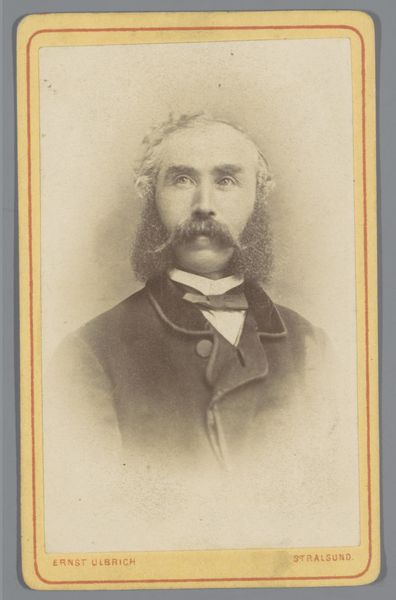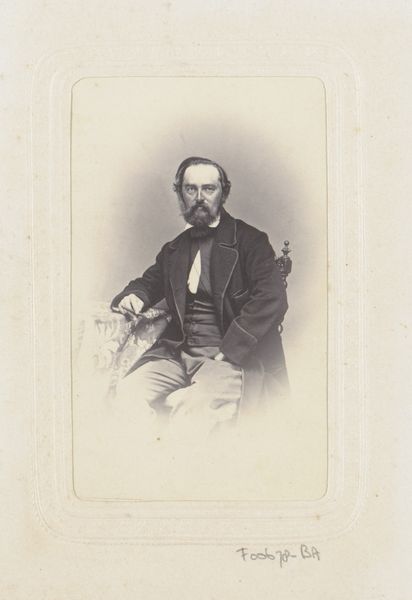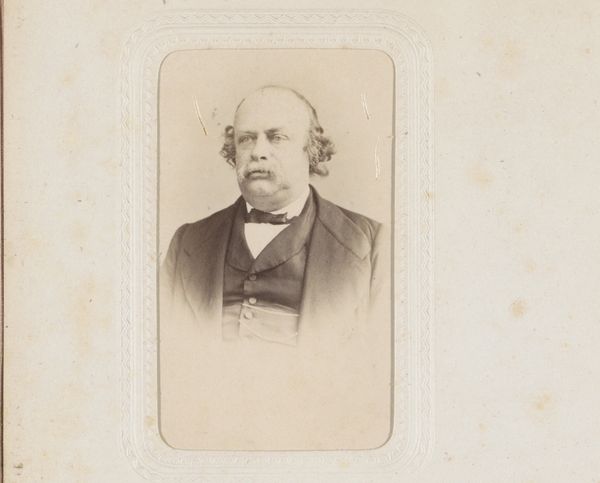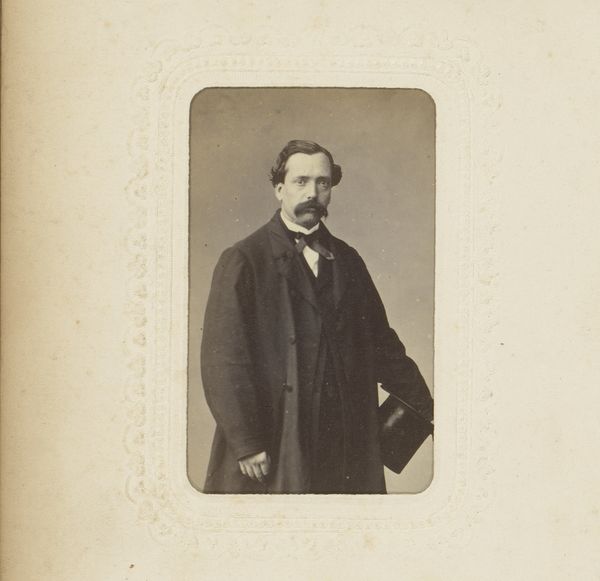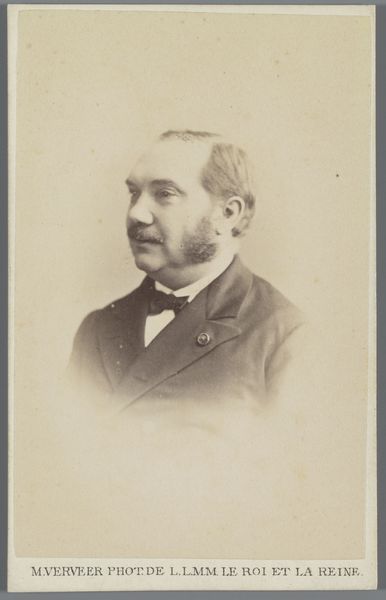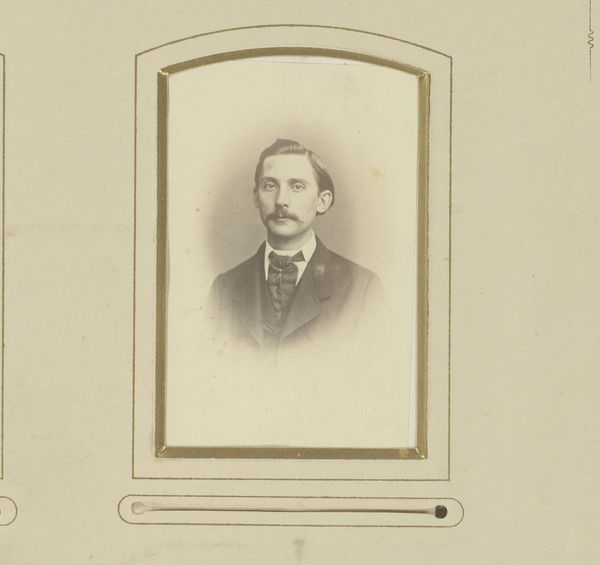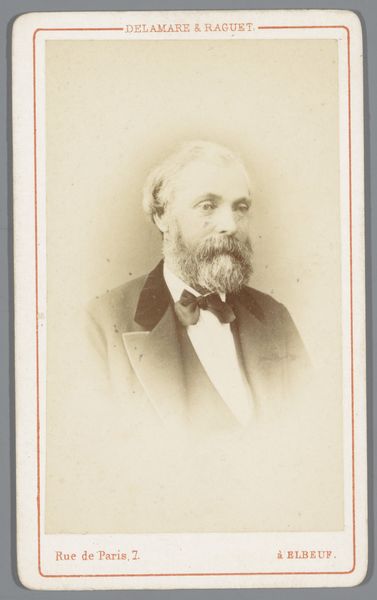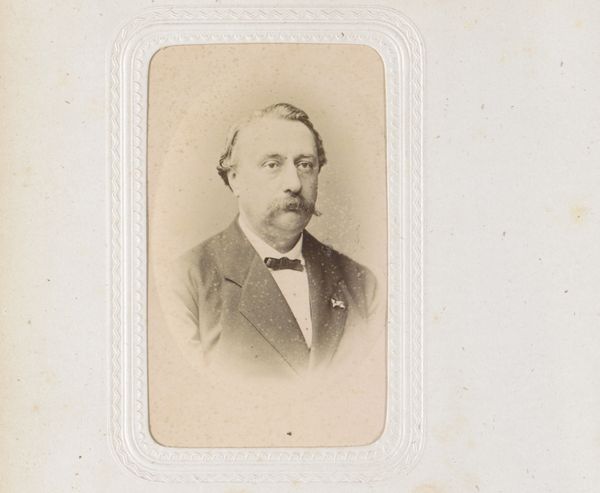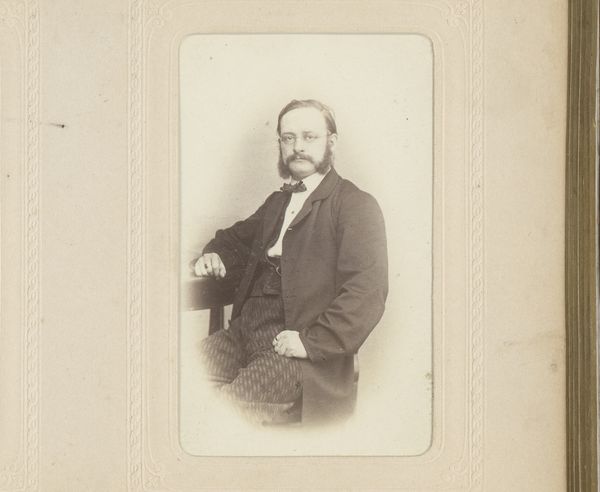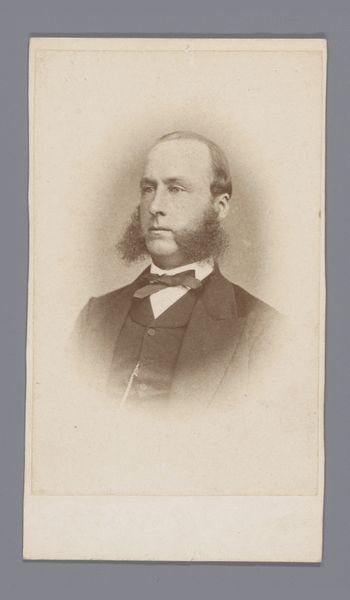
Dimensions: height 96 mm, width 58 mm
Copyright: Rijks Museum: Open Domain
Editor: Here we have "Portret van een man, aangeduid als Karl Olsson," an albumen silver print made sometime between 1854 and 1885, currently at the Rijksmuseum. It strikes me as quite formal, very much of its time, I suppose. What historical contexts would you bring to bear on this piece? Curator: It's interesting you mention "formal." The rise of photography in this period democratized portraiture, shifting it from an aristocratic privilege to something more accessible. Yet, studios like the one that likely produced this portrait were acutely aware of class distinctions. What do you think the staging, the clothing, and the very act of commissioning a photograph meant socially? Editor: Well, the suit and bow tie definitely speak to a certain level of respectability, and perhaps aspiring to an elevated social status. It's a carefully constructed image, isn't it? But how does the ambiguity of its date impact its interpretation? Curator: Precisely. That ambiguity complicates matters. Early photography was often linked to scientific positivism—a desire to document reality objectively. However, even then, it was a mediated representation. This portrait, being undated, raises questions. Is it an attempt to align with those scientific aspirations, or is it instead part of a broader, more commercially driven movement that was shaped by bourgeois aspirations? Also, to what extent does Romanticism play a part in the aesthetics of the time? Editor: That's fascinating; I hadn’t considered the commercial aspect so explicitly. Perhaps both – a blend of science and aspiration, filtered through artistic styles of the time. So the pose and presentation, while seemingly objective, are actually carefully coded social signals. I suppose a photograph’s purpose transcends mere representation; it reflects and shapes social standing. Curator: Exactly. And by looking closely at what appears simple or obvious, we can uncover those social codes and power dynamics. I'm glad we got to chat about that, it brings forth points I had never considered before! Editor: Yes, thinking about the democratizing and commercialising effects on this type of art form shed new light for me, I never thought of portrait photography in such socio-historical ways before!
Comments
No comments
Be the first to comment and join the conversation on the ultimate creative platform.

